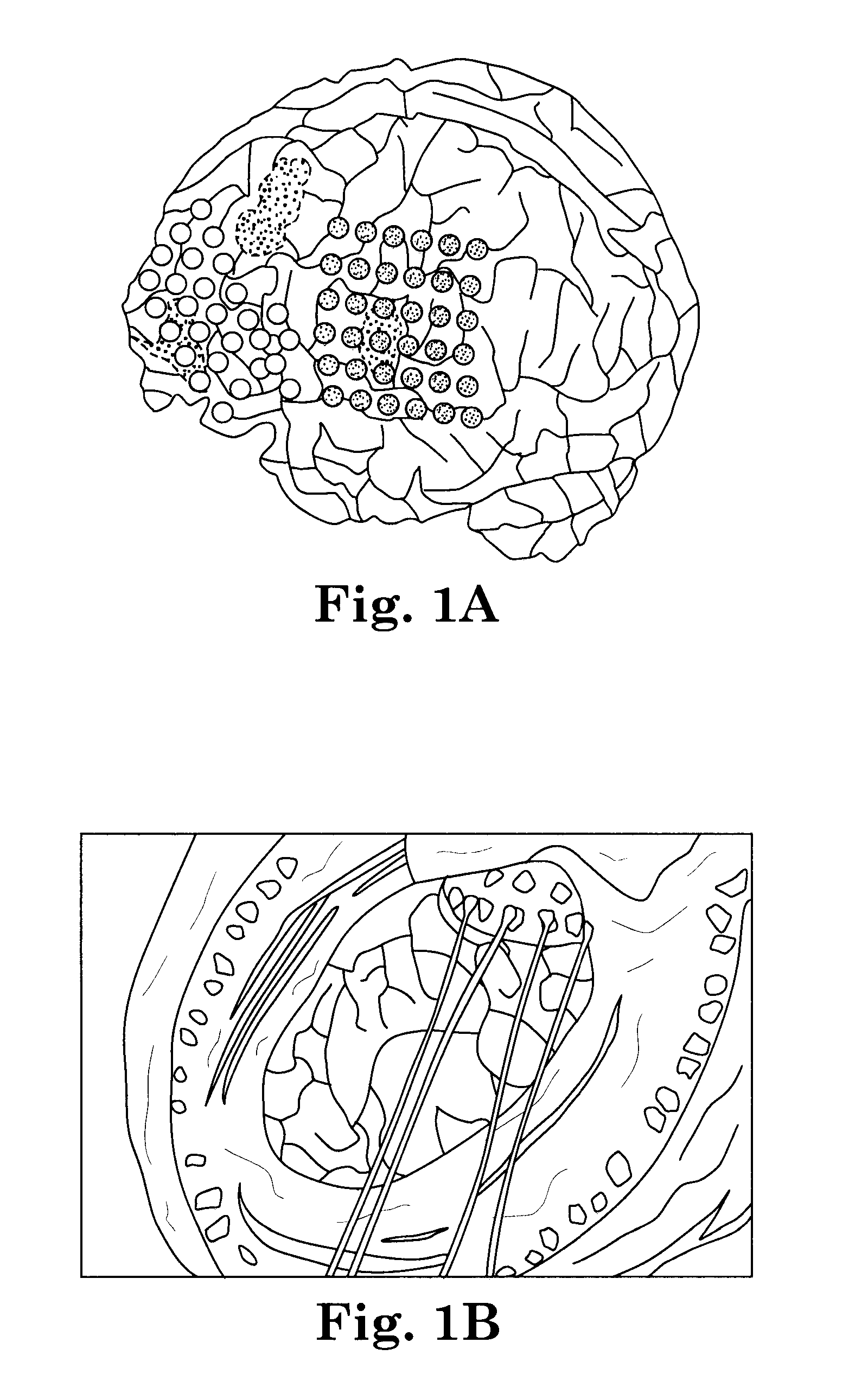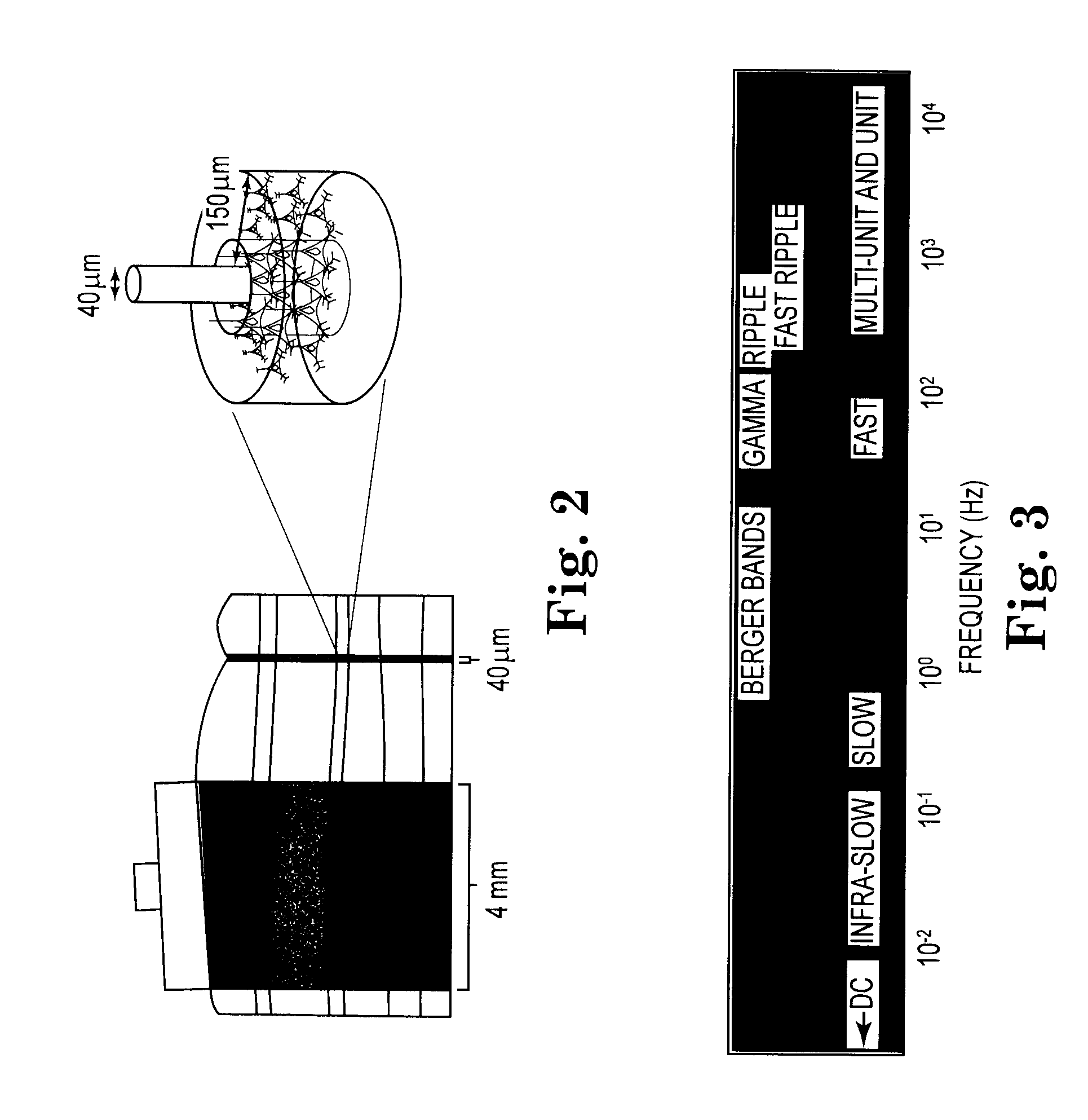Seizure forecasting, microseizure precursor events, and related therapeutic methods and devices
- Summary
- Abstract
- Description
- Claims
- Application Information
AI Technical Summary
Benefits of technology
Problems solved by technology
Method used
Image
Examples
Embodiment Construction
[0045]A multiscale iEEG approach in accordance with one embodiment of the invention utilizes hybrid electrodes composed of microwire arrays that are combined with clinical macroelectrodes. This approach allows continuous recording of single neurons, small neuronal clusters, microdomains of the scale of cortical columns, as well as large-scale iEEG (macrodomain) activity, and permits stimulation (e.g., responsive, intermittent, or continuous) via standard clinical macroelectrodes. Research on patients undergoing evaluation for epilepsy surgery has produced identified electrographic signatures of epileptogenic brain and precursor events that herald the onset of seizures that are detectable using microelectrode arrays. By probing small spatial scales (˜100-1000 μm) seizure-like events, referred to as microseizures, have been identified on isolated sub-millimeter islands of brain. These microseizures are not detected on conventional macroelectrodes, but are clearly evident on adjacent m...
PUM
 Login to View More
Login to View More Abstract
Description
Claims
Application Information
 Login to View More
Login to View More - R&D
- Intellectual Property
- Life Sciences
- Materials
- Tech Scout
- Unparalleled Data Quality
- Higher Quality Content
- 60% Fewer Hallucinations
Browse by: Latest US Patents, China's latest patents, Technical Efficacy Thesaurus, Application Domain, Technology Topic, Popular Technical Reports.
© 2025 PatSnap. All rights reserved.Legal|Privacy policy|Modern Slavery Act Transparency Statement|Sitemap|About US| Contact US: help@patsnap.com



